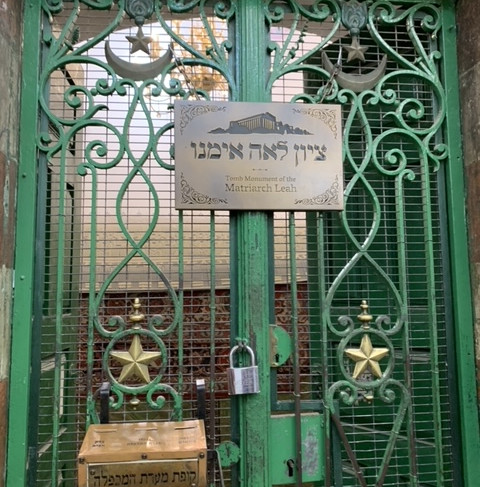The Second Holiest City? In Pictures
- Laura Cofsky
- Feb 5, 2022
- 3 min read
"Have you ever heard of Hebron?" I asked my brother the evening I came back from a trip there.
"No," he responded.
"Yeah, neither had I. Apparently it's our second holiest city in Judaism. So this is embarrassing for both of us."
For the uninitiated, Hebron is kind of a big deal for anyone who follows the Abrahamic religions. Even if you've never heard of it until today.
Hebron in the West Bank is the resting place of the Biblical "matriarchs and patriarchs": Abraham, Sarah, Jacob, Leah, Isaac, and Rebecca. It is also believed that Adam and Eve are buried under their tombs, and that the Garden of Eden can be found in a small cave system there.
You can cut the tension there with a knife. Eighty percent of the city belongs to the Palestinian Authority, while 20% belongs to Israel. For Jews it is the second holiest city. For Muslims it's one of the top four. You do not need to have a masters degree in international relations to understand why this would cause tension.
Here is what I saw in Hebron, in pictures. It should be noted that during this visit I was in the Jewish section.

We passed several of these red signs on the way to Hebron. They delineate where an Israeli passport holder cannot legally go.


It's not super obvious from these photos, but the streets were dead quiet. At one point during our trip we heard school children shouting and playing. We were completely taken aback by the loud sound cutting through such oblique silence.
To live in a place like Hebron is largely a political choice. The reason people don't walk the streets is because it's dangerous. You will not find many storefronts either. In Jerusalem, we're spoiled with Parisian bakeries, bustling falafel shops, and stores selling richly-colored dresses. Hebron doesn't feel like a place you go to live. It feels more like a place you go to exist.

These are ruins from an ancient Israelite settlement. The oldest bit, which was part of a residential structure, is 4,500 years old and from the early Bronze Age. Ironically, it's underneath a current apartment building.

Hebron is truly filled with history, and you can find more than Abraham's direct bloodline laid to rest there. There are also the tombs of Ruth and Yishai (Jesse).

A torah scroll found in the Avraham Avinu Synagogue. Originally built by expelled Spanish Jews in 1540, the temple has been demolished and resurrected multiple times over the centuries. The current iteration was re-built after the site had been turned into a public lavatory.

This is the Tomb of Machpela. This is where every Biblical matriarch and patriarch is laid to rest (except for Rachel, who is in Bethlehem). It is also thought that the entrance to the Garden of Eden exists inside a small cave system within.
These are the tombs where Jacob, Sarah, Abraham, and Leah were laid to rest.
Of note is the interesting custody arrangement between the Jewish and Muslim populations. All year round, Jews can visit the the tombs listed above. However, the tombs of Rebecca and Isaac (not pictured) are only open on specific holidays, like Rosh Hashanah and Yom Kippur.
For Muslims, it's the opposite, and they can visit the above four matriarchs and patriarchs on several of their holidays, including Eid Al Fitr and several parts of Ramadan.

I'm ending this post with Abraham's Spring. This Spring is the main reason why Hebron exists. It was a water source of both spiritual and practical importance.
In the wintry cold, I watched as several tourists wandered down to dip a finger or two in the small trickle of water. A couple of them filled bottle caps with the stuff to share with companions. They would move the dirty towels out of the way, and climb over the trash just to touch this holy water.
And there, in the middle of one of our holiest cities, we see an ancient water source, covered in litter that no one will take the time to remove. In fact, much of the city is covered with garbage. But I didn't want to take pictures of that. I would just make note of it during the pauses between sight-seeing and saying prayers I didn't fully understand.












Comments